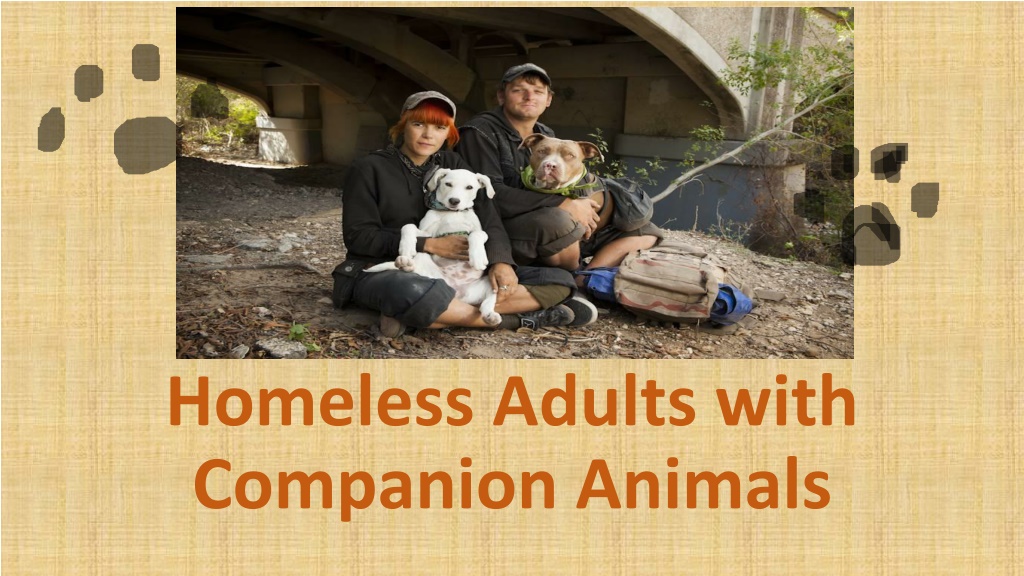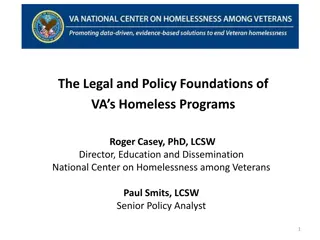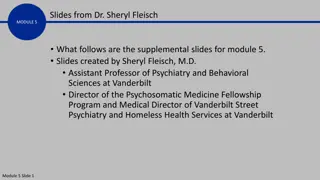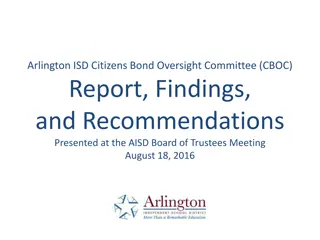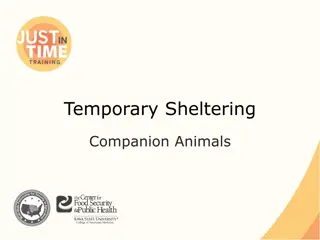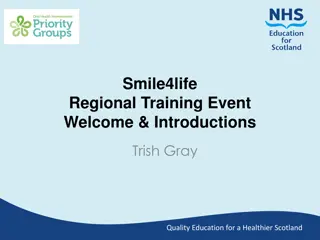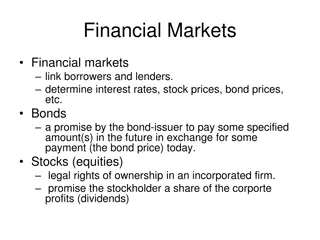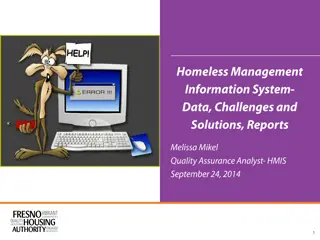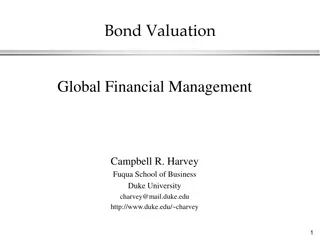Understanding the Bond Between Homeless Adults and Companion Animals
Homeless individuals often prioritize their companion animals over their own needs, leading to challenges accessing essential services like shelter, food, and healthcare. Fear of separation from their pets deters many from seeking help, leaving them exposed to harsh conditions. Despite significant government funding for homelessness programs, restrictions on pets in shelters limit access, exacerbating the vulnerable situation of those living on the streets with their beloved animals.
Uploaded on Nov 22, 2024 | 0 Views
Download Presentation

Please find below an Image/Link to download the presentation.
The content on the website is provided AS IS for your information and personal use only. It may not be sold, licensed, or shared on other websites without obtaining consent from the author. Download presentation by click this link. If you encounter any issues during the download, it is possible that the publisher has removed the file from their server.
E N D
Presentation Transcript
Homeless Adults with Companion Animals
Homeless Adults with Companion Animals Homeless Adults with Companion Animals Sandi Harp, MSW Dissertation Status at Walden University Social Work Administration PhD Program MSW from Florida State University Subjective Meanings of Community Services: The Lived Experiences of Homeless Adults with Companion Animals
Homeless Adults with Companion Animals Homeless Adults with Companion Animals My question having lost so many people, things, relationships, and basic needs, why do homeless individuals seem to cling to their companion animals, at the expense of their own needs? What is it about this pet (usually a dog) that causes them to forego shelter and assistance with food, physical health, mental health, and any other community service? What may be a reason why homeless persons with a dog live unsheltered?
Homeless Adults with Companion Animals Homeless Adults with Companion Animals What s the Problem?? The 2017 U.S. government budgeted 60.2 billion dollars toward homelessness programs (U.S. HUD, 2017), but a large percentage may not have access because of agency pet restrictions. Services are under-utilized or forfeited altogether. Fear of separation from a CA prevents many individuals from connecting to shelter, which leaves them vulnerable to weather, unsafe conditions, violence, and a lack of basic needs (Donley & Wright, 2012).
Homeless Adults with Companion Animals Homeless Adults with Companion Animals Community Homeless Services: Case management Food/Soup Kitchen Temporary Shelters Veteran s Services Educational Vocational Mental Health Some shelters such as The Bridge in Dallas provides wrap-around services including case management, food, temporary shelter, job training, mental/physical health services, legal services Physical Health Domestic Violence Legal Services Income Services (SSI, SSDI) Addiction Treatment Housing Veterinarian Services
Homeless Adults with Companion Animals Homeless Adults with Companion Animals Very few temporary shelters (homeless or domestic violence) in America accommodate the person and their companion animal. Miami Phoenix Riverside, CA Dallas Family Promise Shelters and Petco Some reasons: Other shelter guests allergic to dogs or fearful of them. City codes Lack of space for animals in the shelter
Homeless Adults with Companion Animals Homeless Adults with Companion Animals https://youtu.be/keKvWdsuE4g In 2016, 429,000 Americans were homeless (HUD, 2016) Approximately 25 % of homeless Americans owns a pet (107,000) (Rhoades, Winetrobe, & Rice, 2015) 68% of American households own pets (American Pet Products) Some causes of homelessness (Deck & Platt, 2015): Systemic issues such as lack of affordable housing, fluctuating labor market, and poverty. Intrinsic issues including mental illness, trauma, domestic violence, and substance abuse.
Homeless Adults with Companion Animals Homeless Adults with Companion Animals Companion Animal = Pet; providing a satisfying psychological relationship that is reciprocal. Possible Meanings of Companion Animals to the Homeless Owner: Family Member Protection Friend Social Ice Breaker Reason to live Reason to stay sober and safe Proof of responsibility Gap in Research: I have found no research that has explored their lived-meanings in reference to program/services utilization attempts and experiences.
Homeless Adults with Companion Animals Homeless Adults with Companion Animals Homeless persons attachment to their pets is deeper than that of the American overall population (Hanrahan, 2013). Why might a homeless individual choose their pet over receiving shelter or other services?
Homeless Adults with Companion Animals Homeless Adults with Companion Animals Positive social change is anticipated by exploring the unique individual needs of homeless persons with CAs in relation to community programs and services. Attachment Theory (Bowlby, 1969 & 1980; Ainsworth, 1989) Based on early childhood bonding with a primary caregiver, a type of attachment occurs: secure, ambivalent, anxious, avoidant, or disorganized, depending on the proximity of the caregiver, as well as nurturing of the infant (Schwartz, 2015). Strange Situation
Homeless Adults with Companion Animals Homeless Adults with Companion Animals Secure Attachment Infant s security in the presence of the primary caregiver. Close proximity, secure base, & safe haven Nurturing and meeting the infant s needs
Homeless Adults with Companion Animals Homeless Adults with Companion Animals Ainsworth stated that children with healthy proximity to their mother are more likely to have a secure base, and knowing their environment is safe provides a safe haven type of environment (Konok, et al., 2015).
Homeless Adults with Companion Animals Homeless Adults with Companion Animals
Homeless Adults with Companion Animals Homeless Adults with Companion Animals
Homeless Adults with Companion Animals Homeless Adults with Companion Animals Insecure Attachment Ambivalent Avoidant Infants unmet physical or emotional needs tends to translate into lack of trust and insecurity as adults (Joeng, Turner, Kim, Choi, Lee, & Kim, 2017).
Homeless Adults with Companion Animals Homeless Adults with Companion Animals
Homeless Adults with Companion Animals Homeless Adults with Companion Animals Evidence-Based Practices with Animals Animal Assisted Interventions is directed and/or delivered by a practitioner with specialized expertise and within the scope of practice of his/her profession. There are specific goals for each individual involved and the process is documented and evaluated. Animal Assisted Therapy a specially trained animal- handler team is an integral part of the treatment process; elderly, chronic and terminally ill, children, autism spectrum, and psychiatric patients. AAT may be as good as interventions such as CBT (Gonzalez-Ramirez & Hernandez, 2014, p. 311).
Homeless Adults with Companion Animals Homeless Adults with Companion Animals Evidence-Based Practices with Animals Including animals in social work practice is a holistic approach. No longer can we as social workers overlook intrinsic anthropocentrism of our work. (Hanrahan, 2013) Emotional Support Animals persons with anxiety and/or depression, college students, disasters, etc. (i.e. Las Vegas mass shootings) PETS Act (post-Katrina) of 2006 67% of research participants said they would refuse to leave their home/pet if their pet was not allowed in a shelter. Jails/Prisons (offender-led dog training programs) for dogs to be adopted. Prisoners also train dogs as service dogs for veterans with PTSD. Additionally, the prisoners training dogs have fewer violations. https://youtu.be/5cnMjoqn-_s
Homeless Adults with Companion Animals Homeless Adults with Companion Animals
Homeless Adults with Companion Animals Homeless Adults with Companion Animals The attachment a human has with a CA has been positively correlated by the measurable increased level of oxytocin (OT) in both the human and their animal (Konok, et al., 2015). Homelessness is considered a toxic stressor, that causes physical, psychological, and social challenges for homeless persons and challenges community service providers to address their needs (Murphy, et al., 2015, p. 268). Pets may provide a buffer to the attachment challenges, however, inability to utilize community services may be a hindrance in getting basic needs met (Donley & Wright, 2012; Slatter, Lloyd, & King, 2012).
Homeless Adults with Companion Animals Homeless Adults with Companion Animals Interactions with pets increases Oxytocin (bonding hormone), which is a physiological response found in the human and the animal during interactions. Oxytocin is a neurochemical that decreases blood pressure, decreases heart rate, and lowers stress rates. The excitement over the hormone began in the 1990s when researchers discovered that breastfeeding women are calmer in the face of exercise and psychosocial stress than bottle-feeding mothers. As opposed to Cortisol s fight, flight, or freeze responses, Oxytocin s role is tend and befriend. (DeAngelis, 2008)
Homeless Adults with Companion Animals Homeless Adults with Companion Animals When is Oxytocin produced? Labor/Delivery Breastfeeding (mom and baby) Sexual Intimacy (husband and wife) Petting Companion Animals (human and animal) Oxytocin and Attachment Early traumatic experiences appear to impair the development of the oxytocin system. Parents with a personal history of childhood abuse are less responsive to the prosocial effects of intranasal oxytocin. (Yates, 2013)
Homeless Adults with Companion Animals Homeless Adults with Companion Animals For homeless adults struggling with safety and security that began in infancy, their companion animal (dog) may be the lubricant for perceived safety and their source of bonding. Research is replete with studies regarding measurable physiological responses to attachment and stress in infancy with a corresponding attachment style throughout the lifespan (Bartz, Lydon, Kolevzon, Zaki, Hollander, Ludwig, & Bolger, 2015; Bernaerts, Prinsen, Berra, Bosmans, Steyaert, & Alaerts, 2017; Borgi & Cirulli, 2016; Eapen, Dadds, Barnett, Kohlhoff, Khan, Radom, & Solove, 2014; Ein-Dor & Hirschberger, 2016; Hurlemann & Scheele, 2016; Joeng, Turner, Kim, Choi, Lee, & Kim, 2017; Murphy, Steele, Bate, Nikitiades, Allman, Bonuck, Meissner, & Steele, 2015; Rockett & Carr, 2014). Infants unmet physical or emotional needs tends to translate into lack of trust and insecurity as adults (Joeng, Turner, Kim, Choi, Lee, & Kim, 2017).
Homeless Adults with Companion Animals Homeless Adults with Companion Animals Homeless people attached to their pets have a stronger bond with their animals than pet- owners with secure housing . Similarly, a dog owner experiences stress reduction when the dog is considered a safe haven.
Homeless Adults with Companion Animals Homeless Adults with Companion Animals Subjective Meanings of Community Services: The Lived Experiences Homeless Adults with Companion Animals Closing the Loop: Homeless Adults Companion Animals Community Services Attachment
Homeless Adults with Companion Animals Homeless Adults with Companion Animals Where to from here?? Face-to-face semi-structured interviews with homeless adults temporarily staying at a pet-friendly shelter. Examine transcripts for themes. Phenomenological interpretations Oral defense of my dissertation. Advocacy at the macro-system level (based on perceived needs of the participants). Share findings
Homeless Adults with Companion Animals Homeless Adults with Companion Animals The righteous care for the needs of their animals Proverbs 12:10
